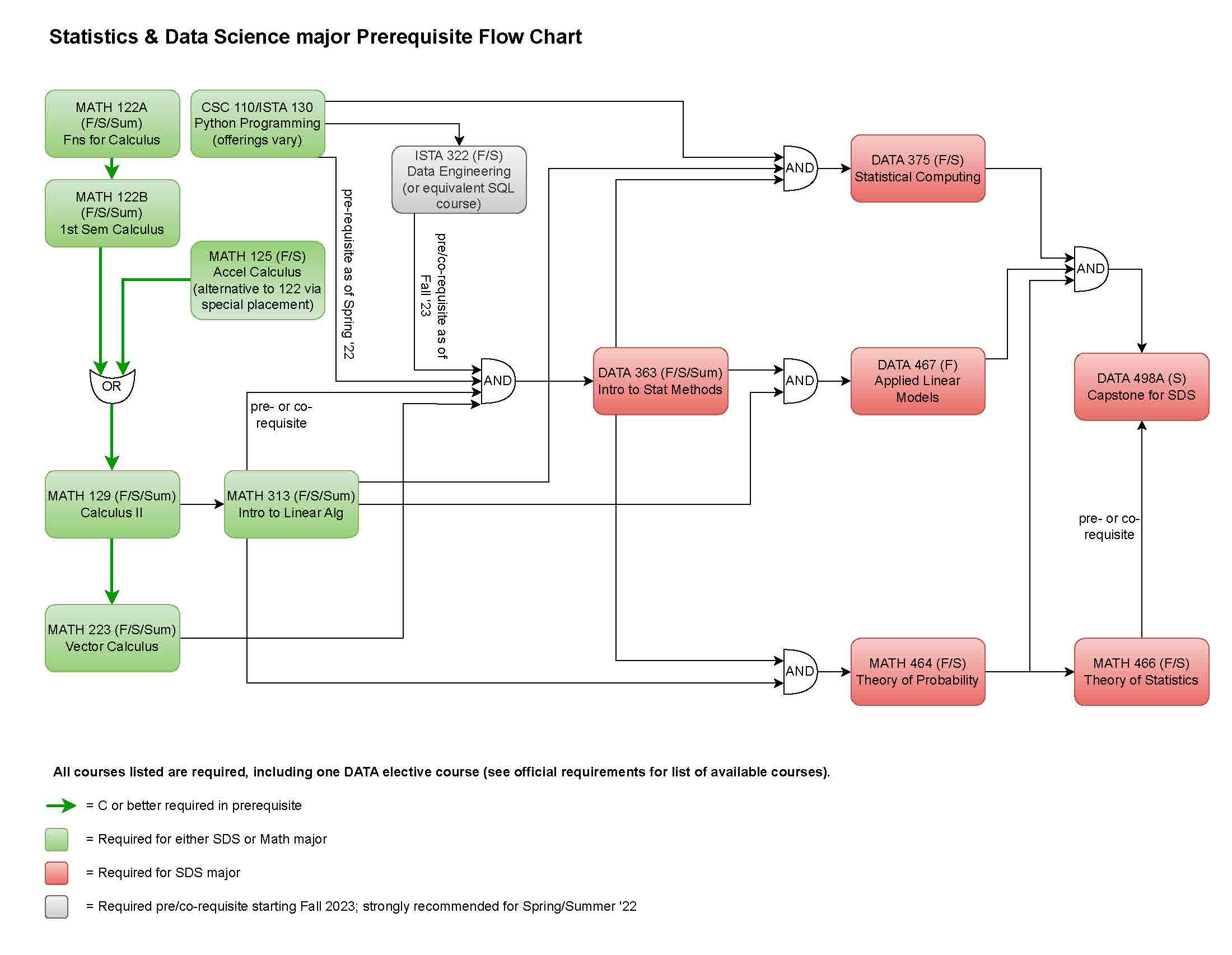Home → Undergraduate Requirements Archive → 2020/2021 Undergraduate Requirements → Statistics & Data Science Major Course Requirements
4. Statistics & Data Science Major Course Requirements
Overview
Both the Bachelor of Arts (B.A.) and the Bachelor of Science (B.S.) in Statistics & Data Science require the same set of supporting and core coursework. A minor in any subject outside the math department is required with this major.
The information and requirements given here apply to the 2020–2021 catalog. For other catalog years, please consult the archive.
The Academic Advising Report (ADVIP) gives complete degree requirements:
Note: this program was brand new for Fall 2018. All SDS majors are expected to meet with an advisor in the Math Center at least once a semester.
Supporting Computer Science Requirement
All SDS majors are required to complete a computer programming course, regardless of the degree selected. Choose one course:(*)
(*)Either CSC 110 or ISTA 130 is recommended for most students. As an alternative, more advanced students may use CSC 120 to fill the requirement. Contact the Computer Science department for more information about placement into CSC 120. Students may complete both ECE 175 AND BE 205 to fulfill the requirement.
Core Courses
- MATH 129— Calculus II
- MATH 223— Vector Calculus
- MATH 313— Introduction to Linear Algebra (2)
- DATA 363— Introduction to Statistical Methods
- DATA 375— Introduction to Statistical Computing (3)
- MATH 464— Theory of Probability (4)
- MATH 466— Theory of Statistics
- DATA 467 — Applied Linear Models (5)
- DATA 498A — Capstone for Statistics and Data Science (6)
- One upper-division statistics major elective.
(1)MATH 122A and MATH 122B are a single-semester sequence of courses that cover Calculus I. They are equivalent to the old MATH 124 course, which is no longer offered.
(2) Either MATH 313 or MATH 310 may be used to fulfill this requirement in the SDS major. However, please note that 310 has a prerequisite of MATH 254. Students who completed MATH 215 prior to fall 2015 or who have transfer credit equivalent to MATH 215 will still fulfill this requirement, though they will not earn upper-division credit for the course.
(3) DATA 375 was offered for the first time in Spring 2019; hereafter it will be offered every fall and spring semester.
(4) Students who have completed MATH 313 and MATH/DATA 363 AND are declared SDS majors or minors will receive assistance from the Math Center to enroll in MATH 464, bypassing the MATH 323 prerequisite. Once there are enough SDS majors to support independent courses, we plan to open new versions with the appropriate prerequisites.
(5) DATA 467 was offered for the first time Fall 2019; hereafter it will be offered every fall semester.
(6) DATA 498A was offered for the first time in Spring 2020; hereafter it will be offered every spring semester.
Statistics & Data Science Major Elective Courses
The SDS major requires one upper-division elective course. The current courses that will be accepted toward this requirement are listed below. More course options will be added as the program grows; see your academic advisor for details.
Course options:
- DATA 367— Statistical Methods in Sports Analytics
- DATA 462— Financial Math
- DATA 468— Applied Stochastic Processes
- SIE 440— Survey of Optimization Methods
